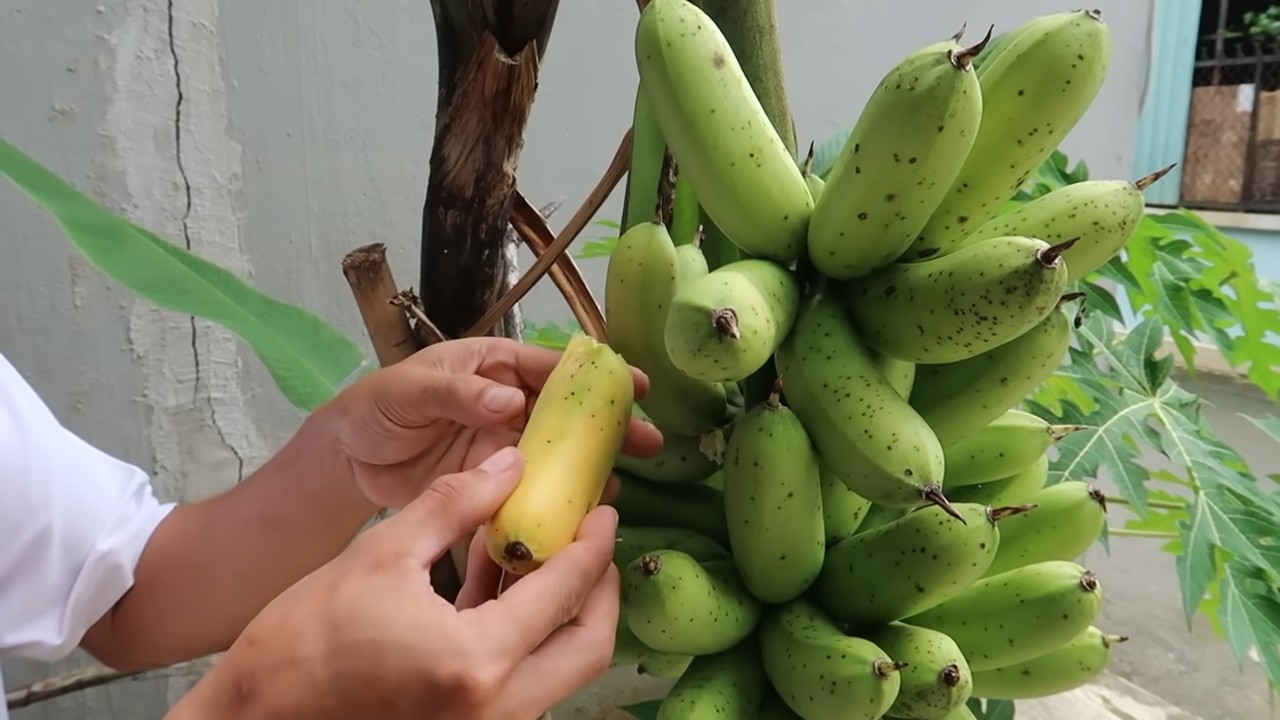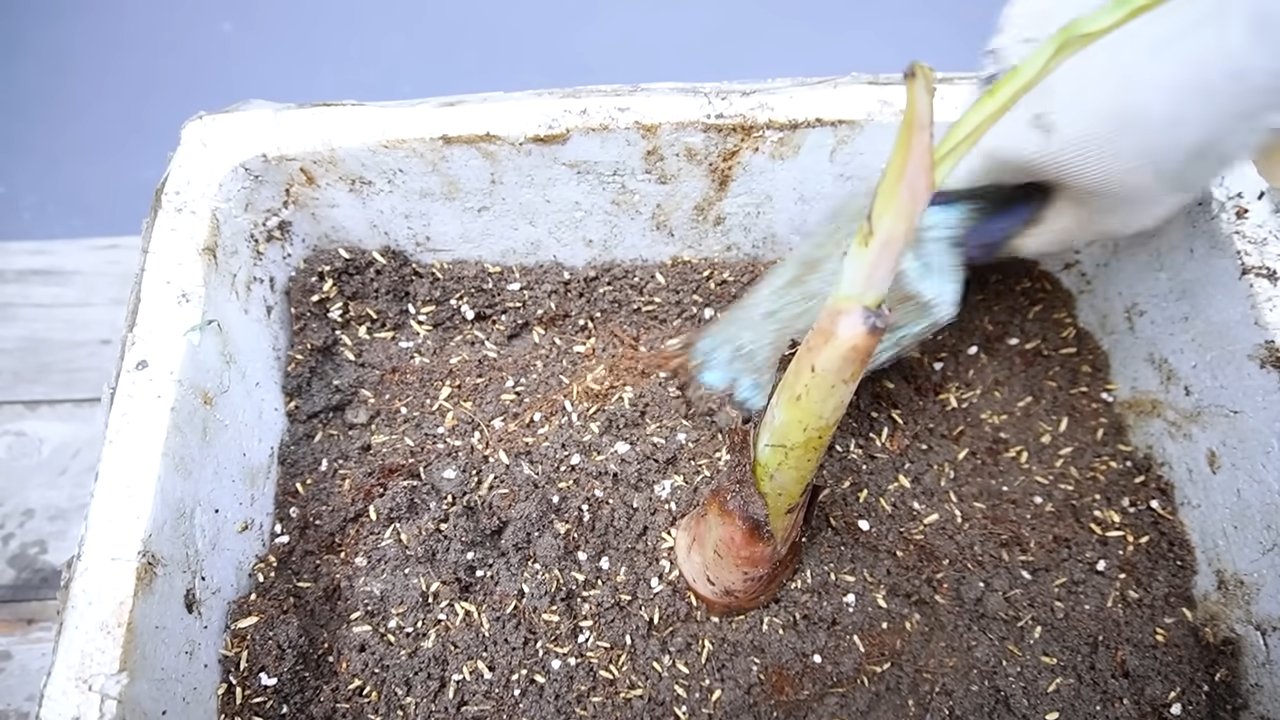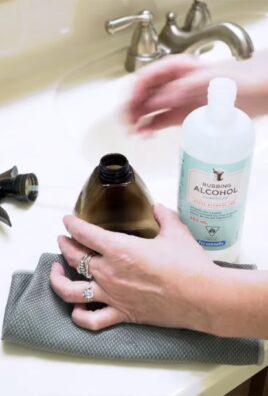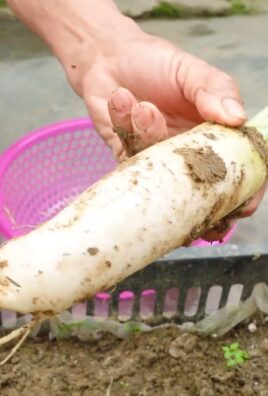Banana peel fertilizer: Sounds a little bananas, right? But trust me, this simple DIY trick can transform your home garden from drab to fab! For centuries, resourceful gardeners have looked to nature’s bounty to nourish their plants, long before the advent of commercially produced fertilizers. Think of it as a return to our roots, quite literally! Our ancestors understood the power of composting and utilizing readily available resources to cultivate thriving gardens.
But why should you bother with banana peel fertilizer? Well, for starters, it’s incredibly easy and cost-effective. We all toss those peels, don’t we? Instead of contributing to landfill waste, you can turn them into a potent plant food packed with potassium, phosphorus, and calcium – essential nutrients for healthy growth, vibrant blooms, and bountiful harvests. Plus, it’s a fantastic way to reduce your environmental impact and embrace a more sustainable lifestyle. I’m excited to share some simple methods for creating and using banana peel fertilizer, so you can unlock the secret to a flourishing garden without breaking the bank. Let’s get started!

DIY Banana Peel Fertilizer: A Gardener’s Secret Weapon
Hey fellow plant lovers! Did you know that those banana peels you’ve been tossing in the trash are actually goldmines for your garden? That’s right! Banana peels are packed with potassium, phosphorus, and other essential nutrients that plants absolutely adore. And the best part? Making your own banana peel fertilizer is super easy and incredibly rewarding. I’m going to walk you through a few different methods, so you can choose the one that best fits your lifestyle and gardening needs. Let’s get started!
Why Banana Peel Fertilizer?
Before we dive into the how-to, let’s quickly chat about why banana peel fertilizer is so fantastic.
* Potassium Powerhouse: Potassium is crucial for strong stems, healthy root development, and vibrant blooms. It also helps plants resist diseases.
* Phosphorus Friend: Phosphorus is essential for photosynthesis, the process plants use to convert sunlight into energy. It also promotes healthy root growth and flower production.
* Trace Minerals: Banana peels contain trace amounts of other beneficial minerals like calcium, magnesium, and manganese.
* Eco-Friendly: You’re reducing waste and giving your plants a natural boost – it’s a win-win!
* Cost-Effective: Seriously, it’s practically free fertilizer!
Method 1: Burying Banana Peels Directly
This is probably the simplest method, perfect for those who want a no-fuss approach.
What you’ll need:
* Banana peels (obviously!)
* A shovel or trowel
Step-by-Step Instructions:
1. Collect Your Peels: Start saving those banana peels! You can store them in a container in your freezer to prevent them from attracting fruit flies and smelling up your kitchen.
2. Prepare the Planting Hole: When planting new plants, dig a hole that’s a bit deeper than you normally would.
3. Bury the Peel: Place the banana peel (or several, depending on the size of your plant) at the bottom of the hole.
4. Cover with Soil: Add a layer of soil over the banana peel before placing your plant in the hole. This will prevent the peel from directly contacting the roots and potentially burning them.
5. Plant as Usual: Plant your seedling or transplant as you normally would, filling the hole with soil and watering thoroughly.
For Established Plants:
1. Dig a Small Trench: Use a trowel to dig a small trench around the base of your established plant, a few inches away from the stem.
2. Bury the Peel: Place the banana peel in the trench.
3. Cover with Soil: Cover the peel with soil.
4. Water Well: Water the area thoroughly to help the decomposition process begin.
Important Considerations:
* Don’t Overdo It: While banana peels are beneficial, too many in one spot can attract pests. Use a moderate amount.
* Decomposition Time: It takes time for the peels to decompose and release their nutrients. Be patient!
* Pest Control: If you live in an area with rodents, burying the peels deep is crucial to prevent them from digging them up.
Method 2: Banana Peel Tea
This method creates a liquid fertilizer that’s easy to apply and quickly absorbed by plants.
What you’ll need:
* Banana peels
* A large jar or container
* Water
Step-by-Step Instructions:
1. Collect and Prepare the Peels: As with the burying method, collect your banana peels. You can cut them into smaller pieces to speed up the process.
2. Fill the Jar: Place the banana peels in your jar or container.
3. Add Water: Fill the jar with water, making sure the peels are completely submerged.
4. Let it Steep: Cover the jar and let it steep for 1-2 weeks. The water will turn a brownish color as the nutrients leach out of the peels.
5. Strain the Tea: After steeping, strain the liquid through a cheesecloth or fine-mesh sieve to remove the solids.
6. Dilute the Tea: Dilute the banana peel tea with water before using it on your plants. A good ratio is 1 part tea to 1 part water.
7. Apply to Plants: Use the diluted tea to water your plants as you normally would. You can also use it as a foliar spray, but be sure to test it on a small area first to make sure it doesn’t burn the leaves.
Tips for Banana Peel Tea:
* Smell Check: The tea might have a slightly funky smell, but it shouldn’t be overpowering. If it smells rotten, discard it and start over.
* Frequency: You can use banana peel tea every 2-4 weeks during the growing season.
* Storage: Store the undiluted tea in a cool, dark place for up to a week.
Method 3: Dried and Powdered Banana Peel Fertilizer
This method allows you to store banana peels for longer periods and create a concentrated fertilizer.
What you’ll need:
* Banana peels
* A dehydrator or oven
* A blender or food processor
Step-by-Step Instructions:
1. Prepare the Peels: Wash the banana peels thoroughly to remove any dirt or residue. Cut them into smaller pieces.
2. Dry the Peels:
* Dehydrator: Arrange the banana peel pieces on the trays of your dehydrator and dry them at 135°F (57°C) for 6-8 hours, or until they are completely dry and brittle.
* Oven: Preheat your oven to the lowest setting (ideally around 170°F or 77°C). Spread the banana peel pieces on a baking sheet lined with parchment paper. Bake for 2-4 hours, or until they are completely dry and brittle. Keep the oven door slightly ajar to allow moisture to escape.
3. Grind the Peels: Once the peels are completely dry, let them cool completely. Then, transfer them to a blender or food processor and grind them into a fine powder.
4. Store the Powder: Store the banana peel powder in an airtight container in a cool, dry place. It should last for several months.
5. Use the Powder:
* Soil Amendment: Sprinkle the banana peel powder around the base of your plants and gently work it into the soil.
* Potting Mix: Mix the powder into your potting mix when repotting plants.
* Banana Peel Tea: Add a tablespoon of the powder to a jar of water and let it steep for a few days to make a quick banana peel tea.
Benefits of Dried and Powdered Fertilizer:
* Long Shelf Life: The powder can be stored for a long time without spoiling.
* Concentrated Nutrients: The drying process concentrates the nutrients in the peels.
* Versatile Use: You can use the powder in various ways, depending on your needs.
Which Plants Benefit Most from Banana Peel Fertilizer?
While most plants can benefit from banana peel fertilizer, some are particularly fond of it:
* Roses: Potassium promotes strong stems and vibrant blooms in roses.
* Tomatoes: Tomatoes are heavy feeders and benefit from the extra potassium and phosphorus.
* Peppers: Like tomatoes, peppers thrive with the nutrients found in banana peels.
* Flowering Plants: Plants that produce lots of flowers, like petunias and geraniums, will appreciate the potassium boost.
* Vegetables: Many vegetables, including cucumbers, zucchini, and squash, will benefit from the added nutrients.
Troubleshooting and Tips
* Fruit Flies: If you’re storing banana peels indoors, fruit flies can be a problem. Store them in a sealed container in the freezer to prevent this.
* Mold: If you notice mold growing on your banana peels, discard them.
* Soil pH: Banana peels can slightly raise the pH of your soil. If you have plants that prefer acidic soil, use banana peel fertilizer sparingly.
* Combine with Other Fertilizers: Banana peel fertilizer is a great supplement, but it’s not a complete fertilizer. You may still need to use other fertilizers to provide all the nutrients your plants need.
* Composting: You can also add banana peels to your compost pile. They will break down and add valuable nutrients to your compost.
So there you have it! Three easy ways to turn those banana peels into a fantastic fertilizer for your plants. I hope you give one (or all!) of these methods a try. Happy gardening!

Conclusion
So, there you have it! Transforming your discarded banana peels into a potent, all-natural fertilizer is not just a clever way to reduce waste; it’s a game-changer for your garden. We’ve explored the simple methods, the science behind the benefits, and the myriad ways this DIY trick can boost your plants’ health and productivity.
Why is this a must-try? Because it’s sustainable, cost-effective, and incredibly easy. You’re essentially unlocking the hidden potential within something you’d normally throw away, turning trash into treasure for your garden. Think about it: potassium, phosphorus, calcium, and other vital nutrients, all readily available to your plants thanks to the humble banana peel. No more expensive, synthetic fertilizers with questionable ingredients. You’re in control, providing your plants with a natural boost that promotes strong roots, vibrant blooms, and bountiful harvests.
But the benefits extend beyond just plant health. By using banana peel fertilizer, you’re actively participating in a more sustainable lifestyle. You’re reducing your carbon footprint, minimizing waste, and contributing to a healthier planet. It’s a small change with a big impact.
Looking for variations? Absolutely! Consider experimenting with different application methods. While burying banana peels directly in the soil is effective, you can also create a nutrient-rich tea by soaking the peels in water for a few days. This tea can then be used to water your plants, providing them with a readily absorbable dose of nutrients. Another option is to dry the banana peels and grind them into a powder, which can be sprinkled around the base of your plants or mixed into potting soil. Each method offers slightly different benefits, so feel free to experiment and see what works best for your plants. You can also combine banana peels with other organic materials, such as coffee grounds or eggshells, to create an even more nutrient-rich fertilizer blend. Remember to always monitor your plants and adjust your application methods as needed.
We’ve covered a lot of ground, but the most important thing is to actually try it! Don’t just take our word for it. Gather your banana peels, choose your preferred method, and get started. You’ll be amazed at the difference it makes. We are confident that you will find that using banana peel fertilizer is a simple and effective way to improve your garden’s health.
We’re eager to hear about your experiences. Did you notice a difference in your plants’ growth? Did you try any variations? Share your tips, tricks, and success stories in the comments below. Let’s build a community of gardeners who are passionate about sustainable practices and healthy plants. Together, we can unlock the power of banana peels and create thriving gardens, one peel at a time. So, go ahead, give it a try, and let us know what you think! Your plants will thank you for it.
Frequently Asked Questions (FAQ)
1. How many banana peels do I need to make fertilizer?
The number of banana peels you need depends on the size of your garden and the method you choose. For direct burial, one or two peels per plant may be sufficient. For banana peel tea, start with the peels from 3-5 bananas soaked in a gallon of water. For dried and ground banana peel fertilizer, accumulate as many peels as you can over time. There’s no hard and fast rule; adjust based on your plants’ needs and the size of your garden. Remember, it’s better to start with less and add more as needed. Over-fertilizing can be just as harmful as under-fertilizing.
2. Can I use banana peel fertilizer on all types of plants?
While banana peel fertilizer is generally safe and beneficial for most plants, some plants may benefit more than others. Plants that are heavy feeders, such as tomatoes, roses, and peppers, tend to respond particularly well to the high potassium content in banana peels. However, it’s always a good idea to observe your plants closely after applying any fertilizer, including banana peel fertilizer, to ensure they are responding positively. Avoid using banana peel fertilizer on plants that prefer acidic soil, such as blueberries or azaleas, as the alkaline nature of banana peels can raise the soil pH.
3. How often should I apply banana peel fertilizer?
The frequency of application depends on the method you choose and the needs of your plants. For direct burial, you can bury fresh peels every few weeks. For banana peel tea, you can water your plants with it every 1-2 weeks. For dried and ground banana peel fertilizer, you can sprinkle it around the base of your plants every month or so. Again, observe your plants closely and adjust the frequency as needed. If you notice signs of over-fertilization, such as yellowing leaves or stunted growth, reduce the frequency of application.
4. Will banana peels attract pests to my garden?
This is a common concern, and it’s important to take precautions to minimize the risk of attracting pests. When burying banana peels directly in the soil, make sure to bury them deep enough (at least a few inches) to prevent animals from digging them up. You can also cover the buried peels with a layer of mulch or compost. For banana peel tea, strain the tea before using it to remove any solid particles that could attract pests. If you live in an area with a high pest population, you may want to consider using banana peel fertilizer less frequently or opting for a different method, such as dried and ground banana peel fertilizer, which is less likely to attract pests.
5. How long does it take for banana peels to decompose in the soil?
The decomposition rate of banana peels depends on several factors, including the soil temperature, moisture content, and the presence of microorganisms. In warm, moist soil, banana peels can decompose relatively quickly, often within a few weeks. However, in colder or drier conditions, the decomposition process may take longer. To speed up decomposition, you can chop the banana peels into smaller pieces before burying them. You can also add compost or other organic matter to the soil to provide a food source for microorganisms, which will help to break down the banana peels more quickly.
6. Can I use banana peels from organic or non-organic bananas?
Ideally, using banana peels from organic bananas is preferable, as it eliminates the risk of introducing synthetic pesticides or herbicides into your garden. However, if you only have access to non-organic bananas, you can still use the peels, but it’s a good idea to wash them thoroughly before using them to remove any surface residues. Peeling the bananas and discarding the outer layer of the peel can also help to reduce the risk of contamination. Ultimately, using any banana peels is better than throwing them away, but opting for organic bananas whenever possible is the most sustainable and environmentally friendly choice.
7. What are the signs of over-fertilizing with banana peel fertilizer?
While banana peel fertilizer is a natural and gentle option, it’s still possible to over-fertilize your plants. Signs of over-fertilization can include yellowing leaves (especially at the tips), stunted growth, wilting, and the accumulation of salts on the soil surface. If you notice any of these signs, reduce the frequency of application or stop using banana peel fertilizer altogether for a while. You can also flush the soil with water to help remove excess nutrients. Remember, it’s always better to err on the side of caution and start with smaller amounts of fertilizer, gradually increasing the amount as needed.
8. Can I compost banana peels instead of using them directly as fertilizer?
Yes, absolutely! Composting banana peels is an excellent way to recycle them and create a nutrient-rich soil amendment for your garden. Banana peels are a valuable addition to any compost pile, as they provide a good source of carbon and potassium. Simply add the banana peels to your compost pile along with other organic materials, such as leaves, grass clippings, and food scraps. Turn the compost pile regularly to ensure proper aeration and decomposition. Once the compost is fully decomposed, you can use it to amend your garden soil, providing your plants with a slow-release source of nutrients.
9. Is banana peel fertilizer safe for pets?
Banana peel fertilizer is generally considered safe for pets, as it is made from natural ingredients and does not contain any harmful chemicals. However, it’s always a good idea to take precautions to prevent your pets from ingesting large quantities of banana peels, as this could cause digestive upset. When burying banana peels in the soil, make sure to bury them deep enough to prevent your pets from digging them up. You can also cover the buried peels with a layer of mulch or compost. If you are concerned about your pets ingesting banana peels, you may want to consider using banana peel tea or dried and ground banana peel fertilizer instead, as these methods are less likely to attract pets.
10. Can I use banana peels to deter aphids or other pests?
While banana peels are not a proven pest repellent, some gardeners believe that they can help to deter aphids and other pests. The theory is that the scent of banana peels can confuse or repel certain pests. To try this method, you can place banana peels around the base of your plants or hang them from branches. However, it’s important to note that this is not a guaranteed solution, and you may need to use other pest control methods in conjunction with banana peels to effectively manage pests in your garden.




Leave a Comment